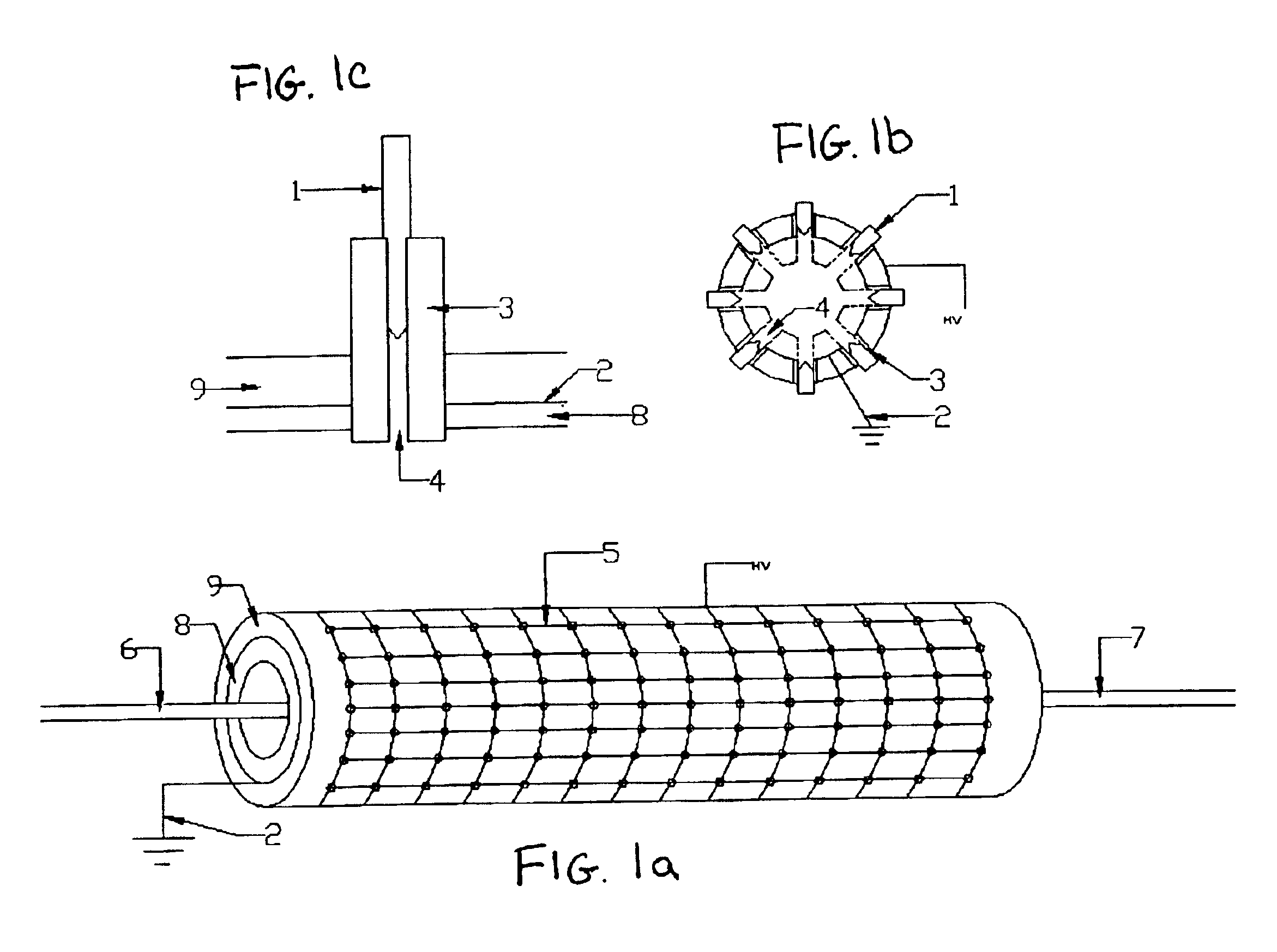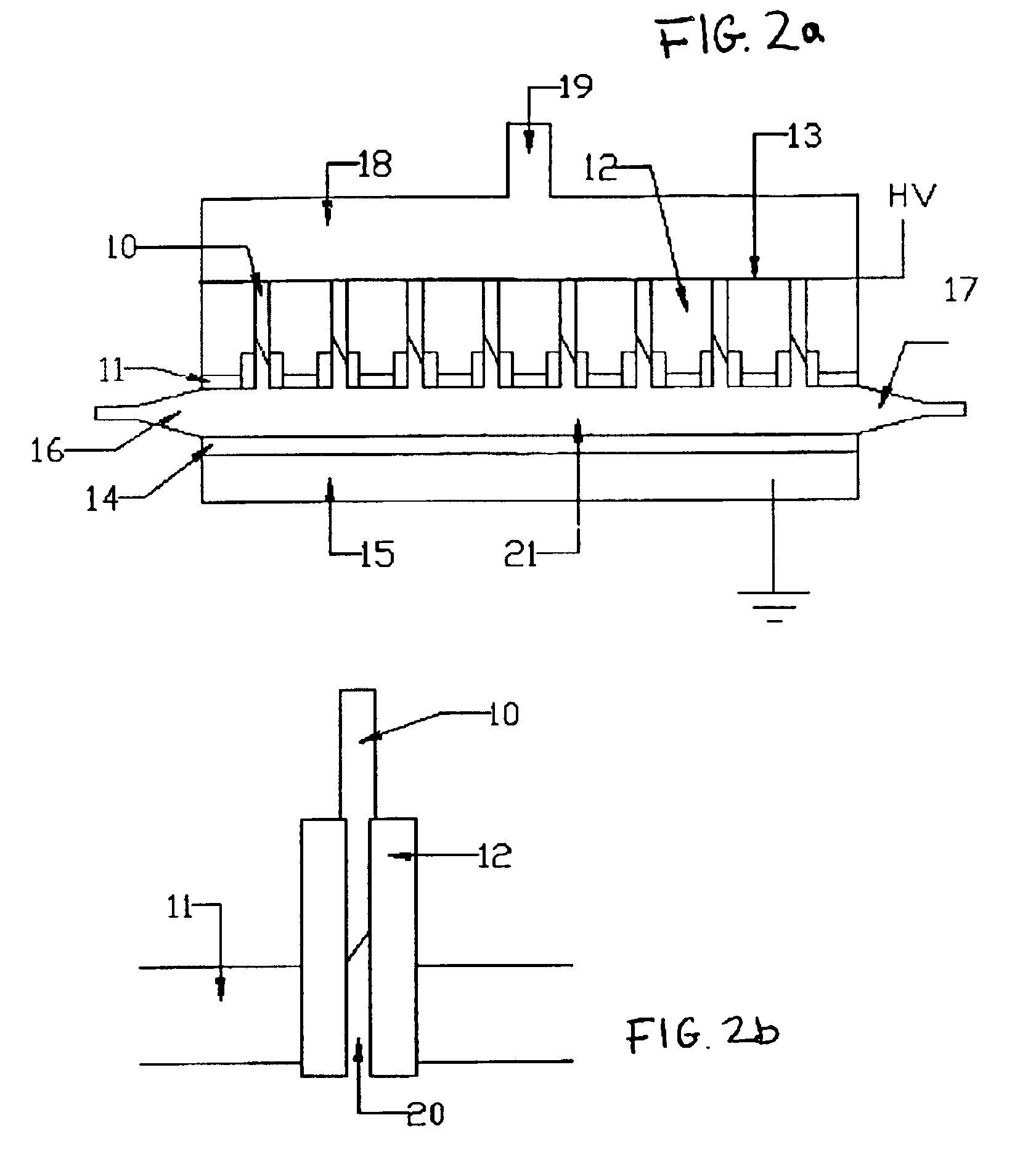Chemical processing using non-thermal discharge plasma
a technology of plasma and chemical processing, applied in the direction of thermal naphtha reforming, physical/chemical process catalysts, detergent compounding agents, etc., can solve the problem of not revealing or suggesting the use of oxygen rich plasma to stabilize pan fibers, etc., to enhance chemical processing and enhance water gas shifting
- Summary
- Abstract
- Description
- Claims
- Application Information
AI Technical Summary
Benefits of technology
Problems solved by technology
Method used
Image
Examples
example
[0032]
[0033]In processes (i) and (ii) described above, non-thermal partial oxidation (“cold combustion”) of hydrocarbon feedstock is activated using NT-CDP / NT-SDP. The plasma generates the following oxidizing species from ambient air: oxygen atoms (O (1D)), hydroxyl radicals (OH), ozone (O3) and peroxide radicals (HO2) into the gas stream. These highly reactive species then selectively oxidize hydrocarbon molecules to produce the desired product from the reaction. In the case of example (i) the desired outcome is CH3(CH2)nCH2OH.
[0034]The reaction described in (iii) above is preferably conducted in a chemically neutral plasma. The term “chemically neutral” refers to environments that have carrier gases that are chemically inert such as (but not limited to) Helium and is the result of direct electron impact dissociation. Process iv) and v), described above, occur preferentially in a chemically reducing plasma, that is a plasma that tends to increase the number of electrons to the targ...
PUM
| Property | Measurement | Unit |
|---|---|---|
| plasma power | aaaaa | aaaaa |
| equilibration time | aaaaa | aaaaa |
| voltage | aaaaa | aaaaa |
Abstract
Description
Claims
Application Information
 Login to View More
Login to View More - R&D
- Intellectual Property
- Life Sciences
- Materials
- Tech Scout
- Unparalleled Data Quality
- Higher Quality Content
- 60% Fewer Hallucinations
Browse by: Latest US Patents, China's latest patents, Technical Efficacy Thesaurus, Application Domain, Technology Topic, Popular Technical Reports.
© 2025 PatSnap. All rights reserved.Legal|Privacy policy|Modern Slavery Act Transparency Statement|Sitemap|About US| Contact US: help@patsnap.com



